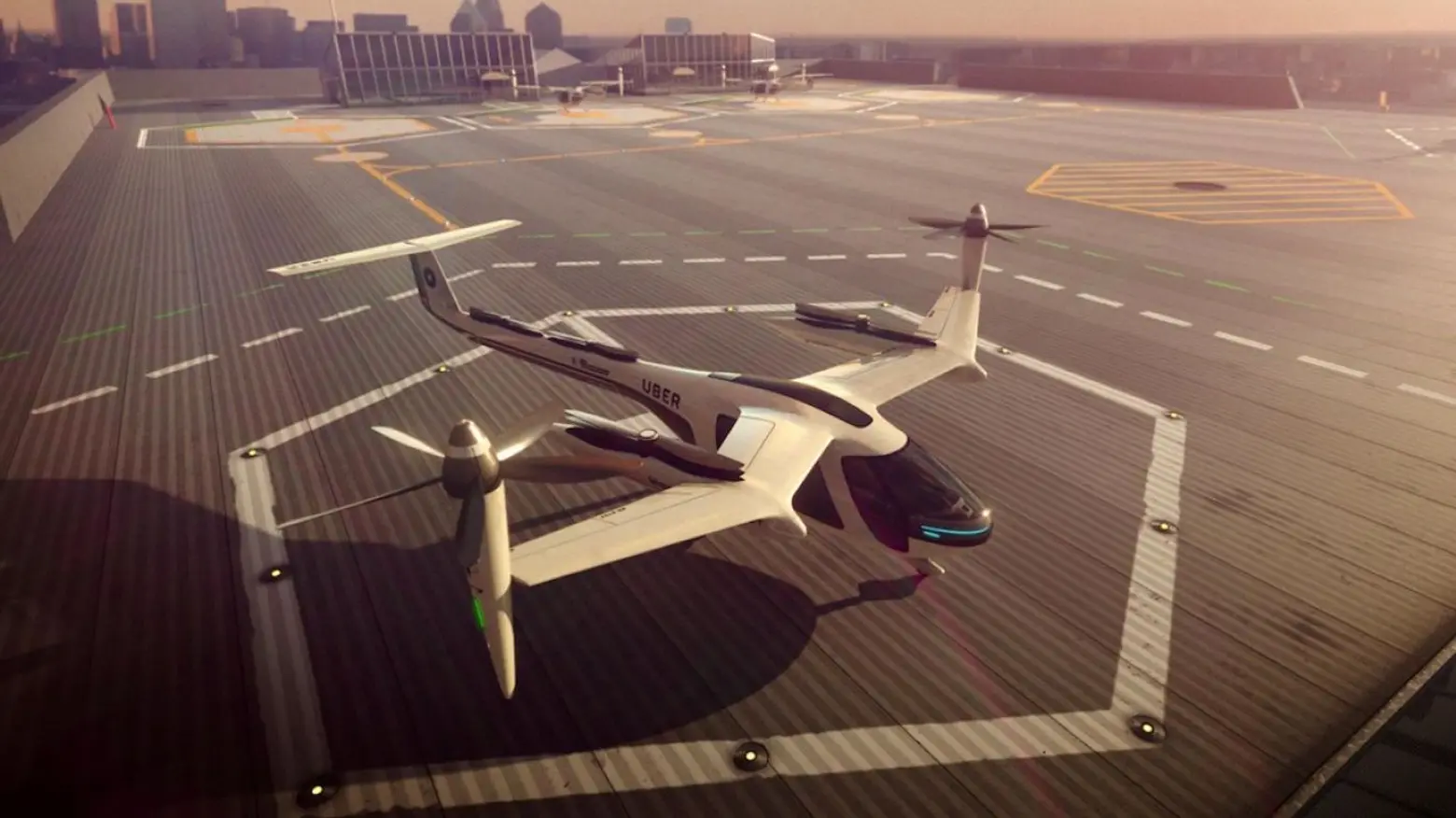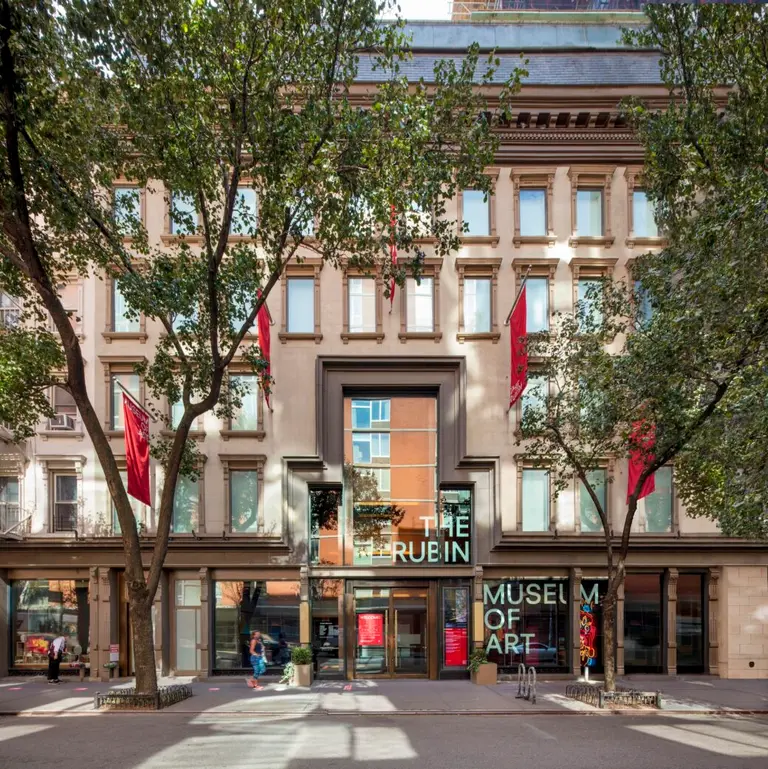Flying Ubers coming in 2023 after NASA partnership

A recently-released rendering of what Uber’s flying taxi, to begin testing in 2020, might look like. (Credit: Uber Technologies via AM New York).
6sqft reported recently on testing of the CityAirbus self-piloted flying taxi by Airbus. There’s already competition ahead, it seems: Uber reported Wednesday that the company is joining the U.S. National Aeronautical and Space Administration (NASA) in the development of software for managing flying taxi routes–essentially “flying Ubers.” In what represents the first formal services contract by NASA dealing with low-altitude airspace, Uber plans to begin testing proposed four-passenger, 200-miles-per-hour flying taxi services in Dallas/Fort Worth, with more testing planned for Los Angeles in 2020 in advance of the 2028 Olympics.
Chief Product Officer Jeff Holden described the air taxi partnership at a Lisbon internet conference, saying the company was working to get official approval from aviation regulators long before introducing any sort of service. “There is a reality that Uber has grown up a lot as a company,” Holden said in an interview, “We are now a major company on the world stage and you can’t do things the same way where you are a large-scale, global company that you can do when you are a small, scrappy startup.” Holden said that Uber is trying to advance the development of electric, on-demand, urban air taxis that customers could use in ways that parallel current ground-based car services it has popularized in over 600 cites since 2011.
NASA signed an agreement in January that enables Uber to join various industry partners that are working with the agency to develop driverless air traffic management systems. The agreement states that Uber will be involved during phase 4 of the project, slated to begin in March of 2019. Completed testing done in phases 1 and 2 have involved drones used in agriculture, fire-fighting and pipeline monitoring as well as long distance uses in sparsely populated regions; phase 3 in 2018 will test services over moderately populated areas. Phase 4 testing will be done in high-density urban areas.
So when can we call up a flying Uber when we’re late for work and traffic is insane? According to Holden, we can expect paid intra-city flying taxi services in 2023. “We are very much embracing the regulatory bodies and starting very early in discussions about this and getting everyone aligned with the vision,” of “ride-sharing in the sky.”
Uber has hired a pair of NASA veterans, Mark Moore and Tom Prevot, to head its aircraft vehicle design team and air traffic management software program, respectively. The NASA agreement will work toward addressing the issues involved in operating thousands of pilotless aircraft over urban areas. Uber’s vision: A fleet of electric jet-powered vehicles capable of both vertical takeoff and landing and rapid horizontal flight–part helicopter, part drone and part fixed-wing aircraft.
In its work on sky traffic management networks, the company is working with manufacturers such as Aurora Flight Sciences, which was recently acquired by Boeing, and has tapped Embraer, Mooney, Bell Helicopter, and Pipistrel Aircraft to develop new takeoff and landing aircraft.
[Via AMNY]
RELATED:
- Airbus passes testing milestone on CityAirbus flying taxi
- ‘Loop NYC’ proposes driverless auto expressways across Manhattan and a 13-mile pedestrian park
- Elon Musk and Tesla seek East Coast domination with new mid-priced electric car model
- Four architecture teams envision NYC’s driverless transit future





























